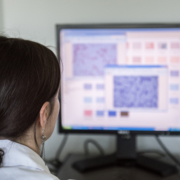The small intestinal ‘mysteriome’: A potentially important but uncharted microbiome
By Eamonn MM Quigley MD FRCP FACP MACG FRCPI, Lynda K and David M Underwood, Center for Digestive Disorders, Division of Gastroenterology and Hepatology, Houston Methodist Hospital, Houston, Texas, USA
Over recent years, countless publications have documented the status of the microbiota of the gastrointestinal tract by examining fecal samples. While this approach does provide a “snapshot” or representation of what is going on in the gut, and especially in the colon, it is a crude measure of the complex interactions between micro-organisms in the gut, as well as between these same microorganisms and us (their hosts). Fecal samples comprise a terminal microbial ecosystem, characterized by depletion of readily fermentable substrates, with a concomitant change in microbial composition, even compared to those farther upstream in the colon. It is unlikely, for example, that studies using fecal samples provide a full picture of what happens when bacteria (or other microorganisms) “talk” to the lining of the gut (the mucosa) or interact with the immune system of the intestine. Even less likely is that they provide any insights into bacterial populations in the small intestine, where most of the digestion of food and absorption of nutrients takes place. The small intestine also possesses the most abundant immune tissue of the entire gastrointestinal tract.
Yet, details of which bacteria actually inhabit this long and important organ, the small intestine, are sketchy. This lack of knowledge has apparently not restricted much theorizing and speculation about the role of an overgrowth of colonic-type bacteria (referred to as small intestinal bacterial overgrowth – SIBO) in the small intestine in many symptoms, disorders, and diseases. According to one especially popular theory – the “leaky gut” hypothesis – the list of conditions is nearly endless. The “leaky gut” hypothesizes that dysbiosis in the small intestine (in other words SIBO) and a disruption of the gut barrier leads to “leakage” of bacteria and bacterial products into the circulation causing inflammation, allergy, and autoimmunity.
There are several leaps of faith involved in “leaky gut” including, of course, the definition and diagnosis of SIBO. Traditional methods of diagnosing SIBO (obtaining fluid samples directly from the upper small intestine or a variety of breath tests) are fraught with problems and, in essence, have precluded a universally accepted definition of SIBO.
Fundamental to this dilemma is the definition of the normal small intestinal microbiome – how can we diagnose abnormal when we do not know the limits of normality? I would contend that, while there are situations where it is undoubted (based on the clinical context and various laboratory and other findings) that SIBO is an issue, there are countless more instances where SIBO is over-diagnosed and incorrectly implicated as the cause of an individual’s symptoms. This is an important issue as it can lead to the inappropriate use of antibiotics – something we all wish to avoid.
There is some good news – clever techniques exist for obtaining uncontaminated fluid samples from the small intestine, a capsule technology that permits live sampling of intestinal gases (generated by bacteria) as it traverses the intestine and the application, at last, of high-throughput sequencing, metagenomics, metabolomics, and metatranscriptomics to small intestinal microbiota suggest that the accurate definition of the normal small intestinal microbiome is not far off. At that time, we can all agree on an accurate and clinically meaningful definition of SIBO.





